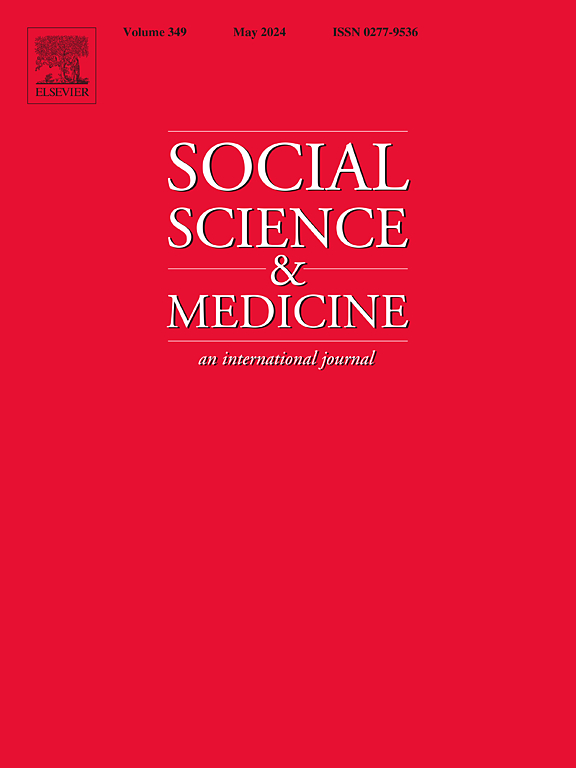选择行为中的禁忌取舍厌恶:一个离散选择模型及其在健康相关决策中的应用
IF 5
2区 医学
Q1 PUBLIC, ENVIRONMENTAL & OCCUPATIONAL HEALTH
引用次数: 0
摘要
目标:在医疗决策中权衡取舍可以解释一些(道德上的)困难。道德心理学文献表明,个体不愿意在属于不同价值观的属性之间进行权衡,比如(神圣的)人类生命与(世俗的)金钱。我们展示和实证测试一个离散选择模型,旨在捕捉禁忌取舍厌恶(TTOA)行为在医疗保健领域。方法将线性加性随机效用最大化(RUM)模型扩展到包含禁忌权衡惩罚的TTOA行为。利用两个专注于公共卫生政策禁忌权衡的离散选择实验(DCEs),我们对传统线性加性RUM模型与TTOA模型进行了实证比较,以探索模型和行为结果的差异。结果两例dce均观察到TTOA。在一个DCE中,TTOA模型将TTOA效应与属性相关的参数分离,当存在TTOA行为时,在常规RUM模型中显示膨胀的参数。这种差异影响了支付意愿(WTP)的估计,与TTOA模型相比,传统RUM模型中WTP节省的增量患者生命约为3.5倍。TTOA的存在和程度在受访者之间差异很大。潜在类别(LC)模型显示,一些被调查群体明显将权衡视为禁忌,而另一些则不然。结论当选择行为受到禁忌权衡的影响时,在RUM模型中考虑TTOA可以获得更准确的行为信息。研究人员和政策制定者可以使用TTOA模型来更细致地了解公众对道德上突出的政策决定的接受程度——最终帮助导航而不是避免禁忌权衡。本文章由计算机程序翻译,如有差异,请以英文原文为准。
Taboo trade-off aversion in choice behaviors: A discrete choice model and application to health-related decisions
Objectives
Taboo trade-offs can explain some of the (moral) difficulties in healthcare decision-making. The moral psychology literature suggests that individuals are averse to making trade-offs between attributes belonging to different values, such as (sacred) human lives versus (secular) money. We demonstrate and empirically test a discrete choice model designed to capture Taboo Trade-off Aversion (TTOA) behaviors in the healthcare domain.
Methods
The linear-additive Random Utility Maximization (RUM) model is extended to capture TTOA behaviors by including penalties for taboo trade-offs. Using two Discrete Choice Experiments (DCEs) focusing on taboo trade-offs in public health policies, we empirically compare conventional linear-additive RUM models with TTOA models to explore differences in model and behavioral results.
Results
We observe TTOA in both DCEs. In one DCE, the TTOA model separates TTOA effects from attribute-related parameters, showing inflated parameters in conventional RUM models when TTOA behavior is present. This discrepancy affected Willingness-To-Pay (WTP) estimates, with WTP to save an incremental patient life approximately 3.5 times higher in conventional RUM models compared to the TTOA models. The presence and magnitude of TTOA varied considerably across respondents. Latent Class (LC) models reveal that some respondent groups perceive trade-offs as taboo significantly, while others do not.
Conclusions
Accounting for TTOA in RUM models may lead to more accurate behavioral information when choice behaviors are affected by taboo trade-offs. Researchers and policymakers can use TTOA models to obtain a more nuanced understanding of public acceptability in morally salient policy decisions – ultimately helping to navigate, rather than avoid, taboo trade-offs.
求助全文
通过发布文献求助,成功后即可免费获取论文全文。
去求助
来源期刊

Social Science & Medicine
PUBLIC, ENVIRONMENTAL & OCCUPATIONAL HEALTH-
CiteScore
9.10
自引率
5.60%
发文量
762
审稿时长
38 days
期刊介绍:
Social Science & Medicine provides an international and interdisciplinary forum for the dissemination of social science research on health. We publish original research articles (both empirical and theoretical), reviews, position papers and commentaries on health issues, to inform current research, policy and practice in all areas of common interest to social scientists, health practitioners, and policy makers. The journal publishes material relevant to any aspect of health from a wide range of social science disciplines (anthropology, economics, epidemiology, geography, policy, psychology, and sociology), and material relevant to the social sciences from any of the professions concerned with physical and mental health, health care, clinical practice, and health policy and organization. We encourage material which is of general interest to an international readership.
 求助内容:
求助内容: 应助结果提醒方式:
应助结果提醒方式:


